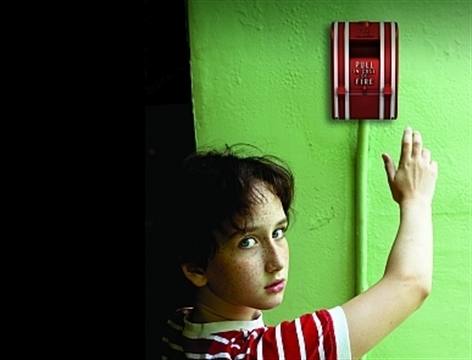7 Steps to Reducing False Fire Alarms
Education, technology, regular maintenance and the appropriate discipline of pranksters are just some of the ways you can begin to address this problem.

5. Place fire detectors in the correct locations: Smoke detectors that are placed too close to kitchens, cooking appliances, locker rooms or bathrooms will most likely be accidentally activated by the smoke or
steam emitted by these sources. Detectors might need to be relocated.
Martin warns, however, that this move needs to be analyzed beforehand. “It can’t be arbitrary because the codes dictate where they have to be,” he says. “It takes someone with knowledge of the code and equipment to place a detector properly.”
6. Use the right detector: There have been remarkable advances in smoke detection technology in recent years that make these devices much less likely to go into nuisance alarm. Using a detector that senses heat and smoke might be one solution.
In the case of burned popcorn, only the smoke element of this device would activate and send a supervisory alarm. During a real fire, both the smoke and heat elements would be activated, thus signaling that everyone in the building should evacuate.
Fike Product Manager for Detection and Control Devices Kevin Montgomery is a fan of installing smoke/heat detectors with sounders in dorm rooms. “That way, [in the case of one student burning popcorn,] the sounder goes off in that individual’s room,” he says. “Of course, the RA can check on that particular room, but it’s not going to tell everyone in the dorm to evacuate the building.”
Some detectors have alarm verification, which can help to cull nuisance alarms from real ones. After the device detects smoke, it waits from 10 to 30 seconds and samples the air again to determine if smoke is still present. If it is still there, the alarm sounds.
7. Maintain your fire system: Nuisance alarms and shoddy system upkeep go hand-in-hand, so it’s no surprise that Campus Safety Fire Survey respondents indicated that system maintenance was their No. 1 fire safety challenge.
According to Wayne Moore, a principal of Hughes Associates Inc. and chairman of the NFPA 72 Emergency Communications Systems technical committee, detectors should be cleaned regularly: devices in classrooms should be cleaned every 18 to 24 months, and the ones in dorms should be cleaned once a year. Of course, if your campus has a newer system, it will let you know when a device needs to be cleaned. Many of them also have LCDs and point ID annunciation that indicate the location of a problem.
Moore says campus staff needs to conduct regular visual inspections of their fire/smoke detectors and control panels. “If they don’t have [the control panels] reporting to one location, then maintenance should regularly look at the control panel [in each building] and see that it’s not in trouble.”
Unfortunately, with new construction, facility personnel are often not provided drawings, programming and training on how to operate the building’s control panel. Maintenance contractors can address this problem, although Moore recommends a campus choose its contractor wisely. “The code says they must be trained by the manufacturer of the control panel in the building,” he says. “If they aren’t trained and if they aren’t authorized dealers of the equipment being tested, they won’t have access to replacement parts.”
It is for this reason that he suggests campuses use only one or two brands of equipment. This helps to ensure all equipment is compatible (a problem for 25 percent of fire survey respondents), and it reduces maintenance expenses.
“Plus, it gives you a lot more clout with the manufacturer if you have 50 of its panels instead of one,” Moore adds.
When a campus has multiple brands of fire, safety and security equipment installed, it is normally a good indication that these systems were installed without much foresight. Campuses that create a clear safety and security plan will have more effective safety strategies, which, in turn, may reduce the overall occurrence of false and nuisance alarms.
This article was originally published in 2014.
| Top Fire Protection Challenges
(Note: Respondents could select four answers)
Other responses include budgets, ADA compliance, age of current system, students cooking, brush fires and trash can fires, debugging new systems, CO detection, tampering, installation of automatic sprinklers, need to install video surveillance cameras, fire system replacement parts, remote notification of activation and poorly trained security officers. |
If you appreciated this article and want to receive more valuable industry content like this, click here to sign up for our FREE digital newsletters!
 Leading in Turbulent Times: Effective Campus Public Safety Leadership for the 21st Century
Leading in Turbulent Times: Effective Campus Public Safety Leadership for the 21st Century
This new webcast will discuss how campus public safety leaders can effectively incorporate Clery Act, Title IX, customer service, “helicopter” parents, emergency notification, town-gown relationships, brand management, Greek Life, student recruitment, faculty, and more into their roles and develop the necessary skills to successfully lead their departments. Register today to attend this free webcast!








